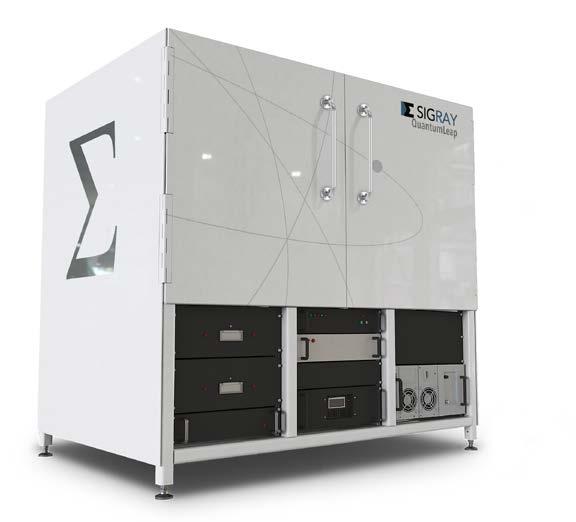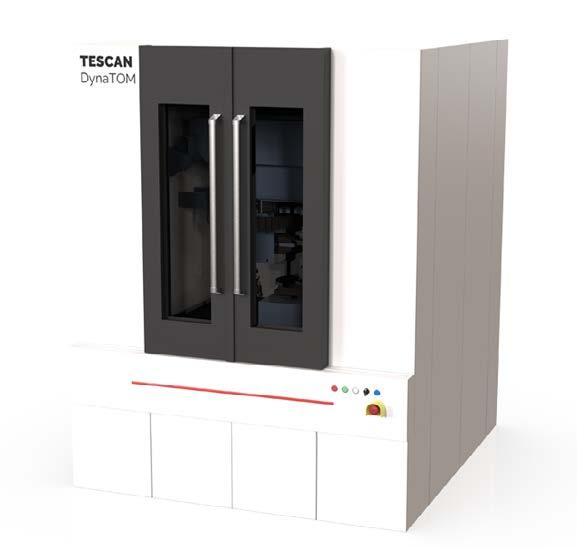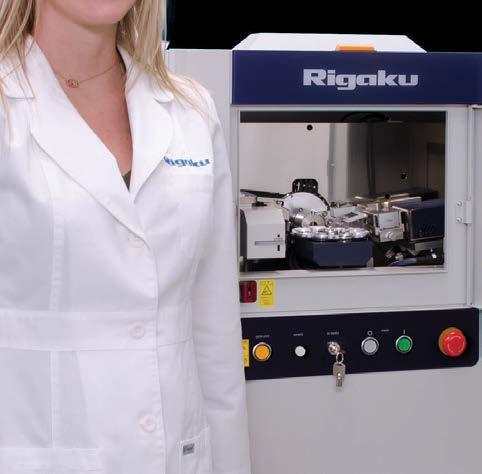
7 minute read
INDUSTRY NEWS: Bridging the Gap to the Synchrotron
Source: By Dr. Cameron Chai, Dr. Nav Dhaliwal, Dr. Kamran Khajehpour, Peter Airey and Richard Trett, AXT Pty Ltd
The Australian Synchrotron (AS) is a critical piece of research infrastructure. The synchrotron beamlines house high-end research facilities which simply cannot be replicated in a normal laboratory. In recent years several technologies have enabled instruments that close the gap to the synchrotron. Instruments that can easily be incorporated into onsite laboratories open up new research opportunities. In this article we take a look at some of these systems.
While the benefits to research of these facilities are undeniable, sometimes access can be an issue. Their sheer size and expense means we only have one in Australia. Unfortunately, running experiments can be cost prohibitive, while availability and logistics can also provide barriers.
Synchrotron Alternatives
While the power of a synchrotron may not be able to be replicated there are lab-based systems available that produce and utilise high intensity X-rays. These systems can provide data that results in similar analyses or can be a highly capable way of screening samples, helping you to decide which are the most important ones to measure at the synchrotron.
X-Ray Diffraction
XRD has been a staple technique for materials identification and analysis. Most commercially available systems use sealed X-ray tubes and are rated at 3kW, but don’t normally operate above 1.6kW (i.e. 40kV and 40mA). The Rigaku SmartLab using uses a Rotating Anode X-ray generator and can operate continuously at 9kW, producing almost 6 times more usable flux with the addition of purposedesign optics. Despite its higher power output it is no bigger than 3kW systems.

9kW Rigaku SmartLab XRD.
This system retains the same architecture as lower powered system, enabling it to run all the same experiments. The higher X-ray flux available with the SmartLab 9kW just means it can do it faster, resulting in higher throughputs, with a better chance of identifying trace components, especially when coupled with high-speed detectors like the HyPix range that use Hybrid pixel area detector (HPAD) technology. Given the life expectancy of a diffractometer, installing a system like this also better prepares your lab for future experiments on materials that you may have never thought of. Similarly for crystallography researchers, in particular those working on single crystals, the Synergy-R from Rigaku Oxford Diffraction uses the same Rotating Anode technology and can also be married to high speed HPAD detectors for maximum sensitivity and throughput.
Micro X-Ray Fluorescence
XRF spectrometers typically use similar sealed X-ray tubes with a limited power output of 3-4kW. Sigray, pioneers in the X-ray imaging and analysis field have developed a revolutionary new X-ray source called Fine Anode Array Source Technology or FAAST. It incorporates micron-scale metal X-ray emitters that are embedded into a diamond substrate which provides optimal cooling and synchrotron-like performance. FAAST is used in the AttoMap, X-ray fluorescence microscope. While a conventional XRF might produce an elemental map in tens of minutes, the AttoMap achieves this is just a

Sigray AttoMap X-ray fluorescence microscope.
Sigray QuantumLeap X-ray absorption spectrometer.

few seconds. Its sensitivity, down to the femtogram level is unrivalled by even techniques such as SEM with EDS. Furthermore, it also has the advantage over conventional XRFs in that it can also produce X-ray images. The AttoMap is applicable to such things as coatings, thin films, metallomics, nanoparticles, contamination of advanced materials, semiconductors, forensics and geological materials.
X-Ray Absorption Spectroscopy
XAS, which encompasses XANES (X-ray absorption near edge structure) and EXAFS (Extended X-Ray Absorption Fine Structure). This technique yields critical insights onto chemical states, such as oxidation states and electronic structure, such as bond lengths and electron geometry surrounding the atom. Utilising the same FAAST synchrotronlike X-ray source, this technique is now available in a lab-based system in the Sigray QuantumLeap. It is highly applicable to batteries, catalysts, fuel cells and solar cells.

Dynamic Micro Computed Tomography
While many lab-based micro-CT systems are able to carry out time lapse studies, continuous dynamic studies, also known as 4D CT are unique to the TESCAN DynaTOM. Previously restricted to the realms of synchrotrons, recent advances in X-ray source and detector technologies, combined with a unique gantry architecture and more intelligent software, the TESCAN DynaTOM is able to continuously scan samples under dynamic conditions, ensuring any specific event is not missed. TESCAN DynaTOM dynamic microCT system. Dynamic studies allow researchers and engineers to understand how materials behave under conditions that more closely resemble real life operating scenarios e.g. changing loads, flow or environments such as temperature. Such studies can rapidly accelerate the development pathway for a wide variety of engineering components.
Angle Resolved Photoemission Spectroscopy
ARPES is a surface sensitive analytical technique which, until recently, had also been only possible at the synchrotron. With advances in laser technology, the KM Labs Hyperion Vacuum

Ultraviolet (VUV) and EUV sources with ultrafast femtosecond pulses, tuneable wavelengths and photon energy only previously possible at synchrotrons can be used as the basis for a lab-based system. When paired with a suitable detector, ARPES (both spin and time resolved) is now a reality in a lab-sized system where it can aid in the development of solar cells, photocathodes and catalysis to spintronics, topological materials and quantum technologies.
Compact Light Source
The Lyncean CLS is a breakthrough technology that delivers synchrotron-like X-rays. Monochromatic, tuneable (8keV to 100keV) and high brightness it is similar in nature to a single beamline. It can be connected to end stations of your choice, thus providing a local synchrotron alternative. At a fraction of the size and a fraction of the cost, it becomes feasible to have synchrotron-type capability in each major city. This could potentially overcome many of the issues with availability and logistics, in fact providing increased availability and access for researchers. It also opens up a lot of reasarch opportunities like studying fragile, short-lived materials or conducting
ongoing long term experimentation.
Lyncean Compact Light Source, a lab-sized system capable of producing synchrotron-like X-rays.

Summary
While The Australian Synchrotron has a defined place in Australian research, there are many systems that are currently available that bridge the gap between it and other common lab-based instruments. By incorporating more of these in research institutions, it is feasible that research outcomes could be accelerated. Whether these synchrotron alternatives produce high enough quality data, or simply act a screening tool for future synchrotron experiments they could potentially also reduce our reliance on the synchrotron.
Time Resolved MicroCT in the Lab is Now a Reality
Source: By Dr. Cameron Chai, AXT Pty Ltd
MicroCT with its ability to nondestructively image materials in 3D is arguably the most exciting imaging modality in materials science. While some systems are able to carry out time lapse studies, TESCAN have upped the ante with the ability to perform dynamic CT experiments, i.e. long-term continuous scans.
Through a marriage of high-power X-ray source, fast detector and powerful software, the TESCAN DynaTOM achieves a spatial resolution of 2-3µm and temporal resolution of 10 seconds. This allows true time-resolved microCT or 4D CT studies that reveals changes to extremely fine structures as they happen. With a unique gantry-style architecture, experimental apparatus can be easily
MicroCT study of the crushing of a metal foam.

incorporated into the X-ray chamber. These allow you to observe changes in materials under dynamic conditions such as load, temperature, flow etc. With the continuous scanning capability, you won’t miss any critical events as may be the case with time lapse. In doing so, you can replicate real life service conditions to see




how your material or components will perform in operation, thus accelerating your path to commercial success. This technology is ideally suited to the development of advanced materials and structures as well as systems in life science and geological sciences.














